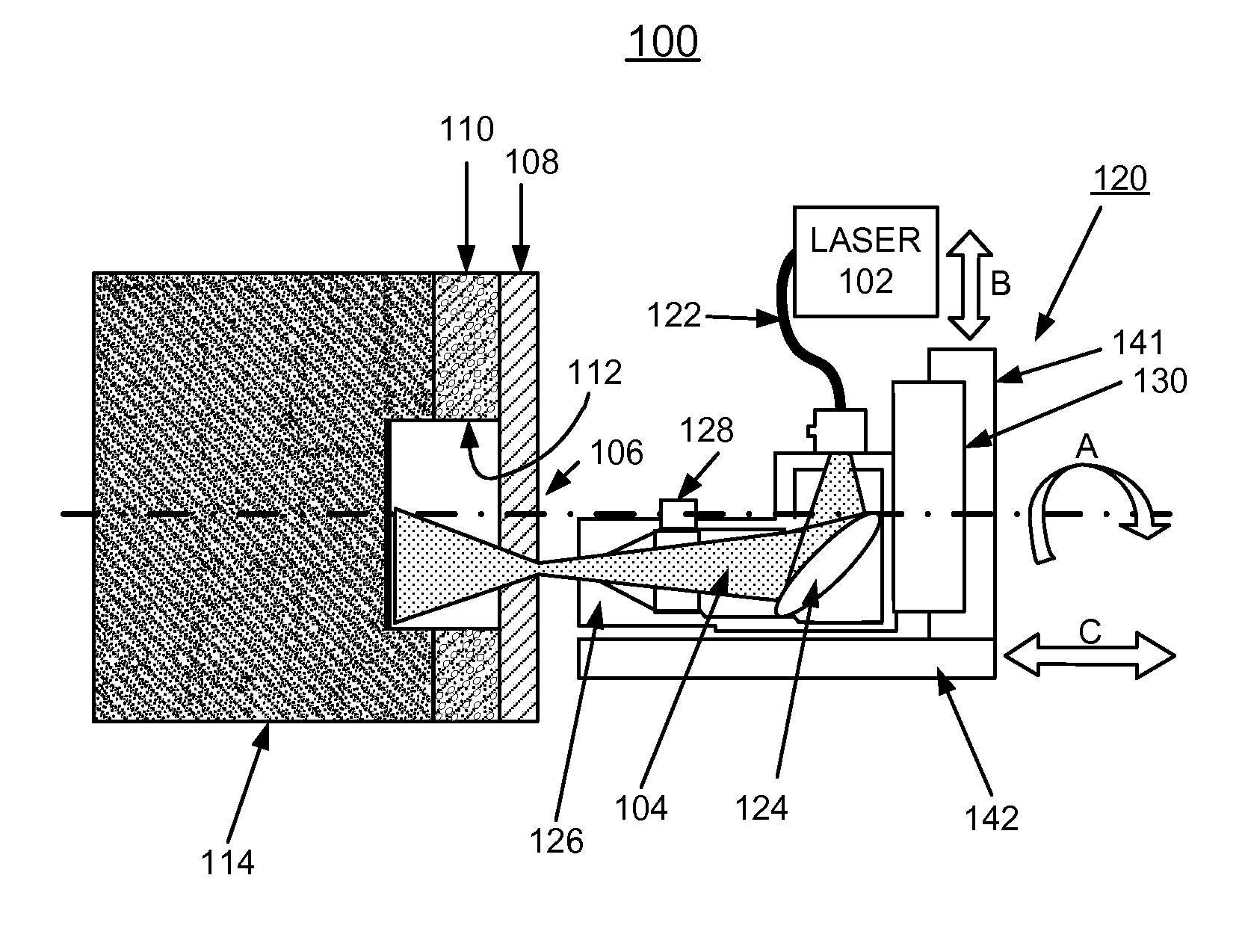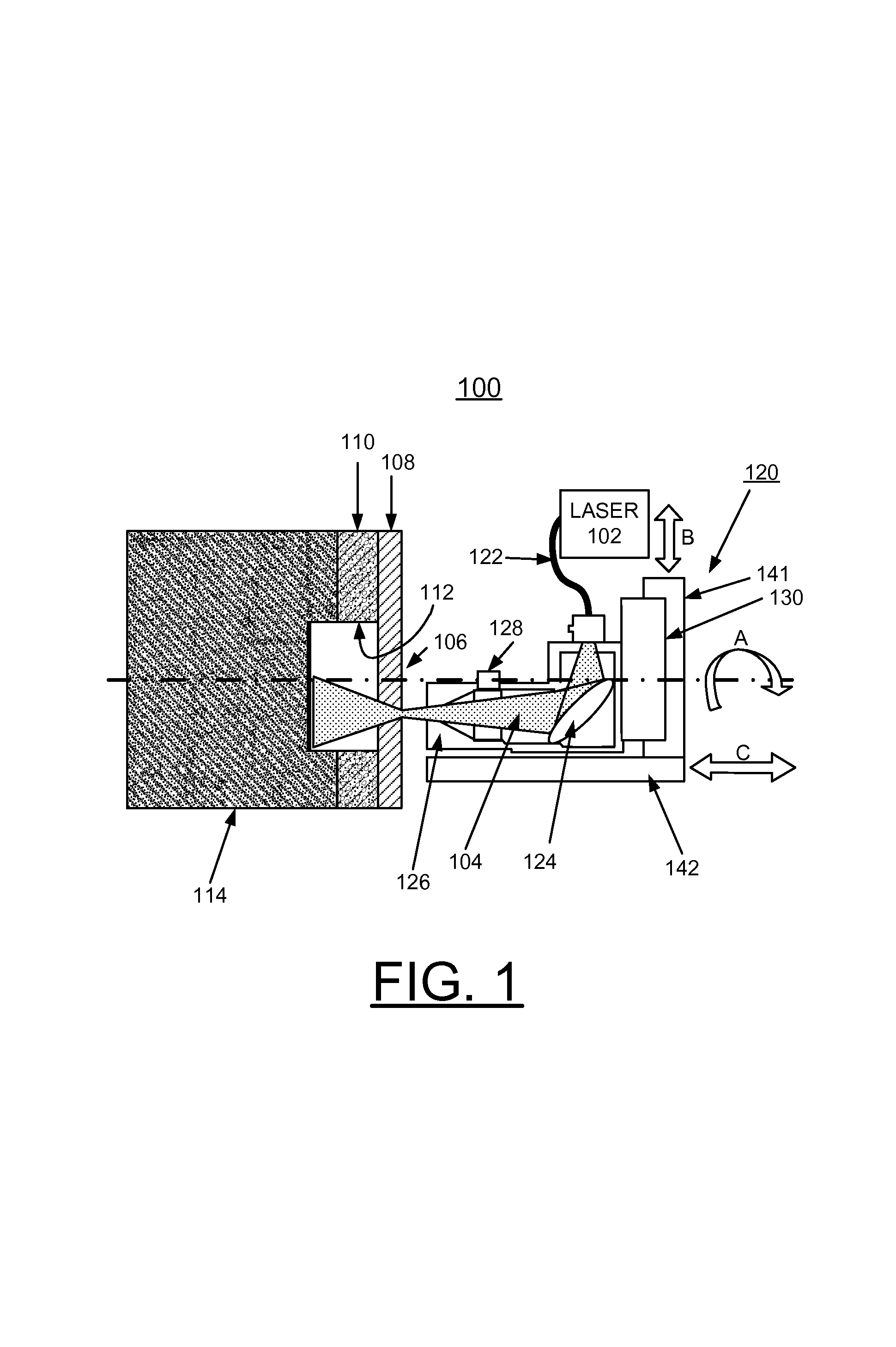Methods of using a laser to perforate composite structures of steel casing, cement and rocks
a technology of steel casing and composite structure, applied in the direction of manufacturing tools, insulation, borehole/well accessories, etc., can solve the problems of significant worker safety issues associated with explosive charge perforation, formation damage or permeability reduction, and significant reduction of oil or gas production rate of wells. , to achieve the effect of reducing hole tapering, reducing formation damage or permeability, and increasing permeability
- Summary
- Abstract
- Description
- Claims
- Application Information
AI Technical Summary
Benefits of technology
Problems solved by technology
Method used
Image
Examples
Embodiment Construction
[0017]In accordance with features of the invention, kilowatt level lasers with fiber optic cable delivery are strong candidates for laser perforation applications for oil and natural gas wells. Test data show that kilowatt level lasers can perforate rocks as efficiently as other higher power lasers do, and simultaneously increase the permeability of the lased reservoir rock up to 500%. A rock removal process, called laser spallation, utilizing a combination of laser-induced thermal stress and laser induced superheated steam explosions just below the surface of the laser / rock interaction to spall or fracture the rock into small fragments that can then be easily removed from the rock formation, is used. High intensity laser energy, applied on a rock that normally has very low thermal conductivity, concentrates locally on the rock surface area and causes the local temperature to increase instantaneously. This results in local thermal stresses in the rock subsurface. The laser energy al...
PUM
| Property | Measurement | Unit |
|---|---|---|
| tilting angle | aaaaa | aaaaa |
| tilting angle | aaaaa | aaaaa |
| time | aaaaa | aaaaa |
Abstract
Description
Claims
Application Information
 Login to View More
Login to View More - R&D
- Intellectual Property
- Life Sciences
- Materials
- Tech Scout
- Unparalleled Data Quality
- Higher Quality Content
- 60% Fewer Hallucinations
Browse by: Latest US Patents, China's latest patents, Technical Efficacy Thesaurus, Application Domain, Technology Topic, Popular Technical Reports.
© 2025 PatSnap. All rights reserved.Legal|Privacy policy|Modern Slavery Act Transparency Statement|Sitemap|About US| Contact US: help@patsnap.com



